An Introduction
Epic phrases in movies are nothing new. Classic characters breed classic lines, from Darth Vader?s ?I am your father? to Enigo Montoya?s ?My name is Enigo Montoya, you killed my father, prepare to die.?
Many of the lines remind us of our identification with the character we have known, loved, or even wanted to really be ourselves. But none of them have been said on screen quite as often as, ?The name is Bond. James Bond,? the immortal introduction of the world?s most famous spy.
The chronicles of the British MI6 agent who dashes into dangerous situations with a sardonic grin, a Walter PPK (first seen in Dr. No), and a taste for vodka martinis (shaken, not stirred), have spanned fifty years and seven actors (David Niven, George Lazenby once each). James Bond has tackled forces of evil when no one else was willing or able to lift a finger, and at times, single-handedly defended the British/American way of life. He?s the superhero with no unearthly powers, no secret origin, no mask to hide behind… but he?s a hero nonetheless.
If Daniel Craig?s blonde Bond is the only one you?ve ever seen on screen, then the depth of the repertoire is missing. Bond has been saving the world one catastrophe at a time since Ian Fleming created the character in 1953; Sean Connery?s portrayal in Dr. No was the first of twenty-five movies (twenty-two recognized within the canon) that have featured James Bond as 007. Nearly twenty years before Robert Ludlum began his illustrious thriller writing career (of which the Jason Bourne stories are the most recognized), Fleming created Bond. Without Bond, there?s no room for Bourne, for Austin Powers, for any of hundreds of adventure stories that feature gadgets, spies, or world-threatening villains.
That kind of absolute admiration has drawn raised eyebrows and incredulous questions. ?How can you be such a big fan? What can you possibly see in those films that lines up with your values? Seriously, aren?t you a Christian or something?? Those are the typical questions, and after twenty years of questions, and subsequent conversations, consider this five-part exploration as my official response.
So, how is James Bond redeemable? What can we learn from the character as conveyed by those who wrote his story, starting with Fleming?s creation in the 1950s, and those who played the part from Sean Connery to Daniel Craig? What could a person seeking morals and meaning in the world possibly see as worth more than a few hours of passing fancy, a fantasy devoid of faithful reality? What can we learn about ourselves, the world we live in, and the expectations of ethics and faith through the stories of Bond?
The common complaint against Bond has been his cavalier attitude toward sex, so exploring the purpose and character of the man requires our examination of the women known as ?Bond Girls.? (Little criticism has been launched at the violence, again showing the Western Church?s affection for a ?hierarchy of sin? as it has been determined in the last fifty years, but that?s neither here nor there. ) Bond is also recognized?by the missions he takes on at the behest of Her Majesty?s Secret Service, and by the villains he encounters along the way. With those three points of reference, in the following chapters, we?ll investigate Bond as sinner, saint, or savior.
What makes Bond the man that he is? Is it nature or nurture, or some blend of both? While the movies which roll through the cineplex now are more standalone in nature, it seems obvious that to understand today?s James Bond, there needs to be some reflection on the historical Bond. Where does he get his motivation? What purpose (or joy) does he get out of accomplishing it? What is his motivation for accepting life-threatening risk? Bond has too often been evaluated critically from the view of his sexual conquests rather than the accomplishing of his goal and the ultimate satisfaction of his free world-saving missions. In these posts, we will consider what it is about Bond that makes him tick, and subsequently, what it is about Bond that is, in fact, redeemable.
Our journey will start with the James Bond we first met on screen in 1962, fifty years ago, as Sean Connery suavely drops that line, ?Bond. James Bond,? in the midst of a card game. Many of you will be introduced to George Lazenby, the one-shot Bond in the middle of the Connery era, who deserves his own chapter at some point but will merely be a footnote. We?ll follow Bond through the ?70s and ?80s with the ?saintly? Roger Moore, establish a change for a more gritty, realistic Bond with Timothy Dalton and Pierce Brosnan, and leave you waiting breathlessly for Spectre?as Daniel Craig returns for a fourth (and potentially final) time carrying his license to kill.
Whether Bond is merely the blunt instrument of his government or the assertive do-gooder is up for you to decide. Still,?the fact remains that no single character has stood the test of time and experienced such prolific success as Bond, James Bond.
While Sean Connery may be better known to a younger audience as the ornery MI6 agent who escaped Alcatraz in The Rock or as Harrison Ford?s father in Indiana Jones and the Last Crusade, his star was born while playing the role of Ian Fleming?s James Bond for a decade. Sure, he won a BAFTA for his performance in In The Name of the Rose and an Academy Award for Best Supporting Actor in The Untouchables, but Bond is the role which marked Connery for life, providing the foundation for who the character would become.
Bond?s origins are much simpler than the gadget-oriented spymaster of the 1970s, 1980s, and 1990s. With Connery as our image, we watch a youngish spy solve problems with his fists, his charm, and his bullish ability to follow or disregard orders as the situation might require. The 1960s version of Bond is in fact simpler, less stylish, and more of a thug with a cause. His attitude is self-centered yet heroic, aloof yet brave. And it all begins on the beautiful island of Jamaica.
Dr. No (1962)
Sean Connery?s James Bond debuted on the silver screen under Terrence Young?s direction when Connery was thirty-two. Young delivered the charming but less refined Bond depicted by Connery in Dr. No (and again in From Russia With Love (1963) and Thunderball (1965)), setting the stage for a globe-trotting British agent with a taste for women and violence, and a knack for ?old school? spy tricks.
In Dr.No, M (Bernard Lee, in his first of eleven outings as the head of MI6) orders Bond to take a Walter PPK as his weapon after his Berretta jammed on a previous mission, setting the stage for the epic Bond armament. He?s sent out by M and his secretary Moneypenny (Lois Maxwell), to explore the death of John Strangeways of the SIS, who has been cut down by Jamaican murderers. In Jamaica, Bond meets up with the CIA contact there, Felix Leiter (Jack Lord, pre-Hawaii 5-0) and begins investigating.
The first violence we experience in Bond?s mission to Jamaica seems stilted and campy compared to today?s action sequences, but Bond soon dispatches some of the enemy operatives. One takes a cyanide pill rather than give up the information about his mission and employer?Bond?s reaction is one of surprise, sorrow, and grief at this wasted life, as he appears almost apologetic for forcing the man into that decision. The growing fear of Dr. No (Joseph Wiseman) is apparent, as the locals, specifically Bond?s guide Quarrel (John Kitzmiller), struggle against Bond?s request to investigate the scientist?s private island, afraid to ?test providence twice.?
In the midst of gathering information, Bond seduces his first enemy operative, the first of many sexual liaisons that Bond will conduct on behalf of Her Majesty?s Secret Service. It seems apparent that this is not out of mutual attraction for the woman, but sex as a tool has been entered into the equation. He?ll later kill again because he ?has to,? before convincing Quarrel to take him to the island.
The emergence of Honey Ryder (Ursula Andress) up out of the river is one of the epic images of Bond girls in the movies. There will later be ties to Halle Berry?s Jinx and even Daniel Craig?s Bond as they emerge from the water, but Bond girls as sex objects begins with Andress? Golden Globe performance. She?s there for revenge against No, while No himself wants to prevent Project Mercury (an American initiative) from putting a human in orbit around the Earth. No represents the Special Executive for Counter-intelligence, Terrorism, Revenge, and Extortion who Bond challenges for being less intelligent than he thinks he is, mocking his goals and aspirations: ??World domination. Same old dream. Our asylums are full of people who think they?re Napoleon? or God.??
Bond takes down No?s project with some help from his accomplices, but his actions have served notice that he?s not just the blunt object he?ll later be called. His articulation of No?s narcissism and lust for power, specifically with the faulty personal comparisons to both Napoleon and God, shows that Bond?s actions have been solely intent on removing any threat to the civilized world without any thirst for violence. Sex, violence, and his own license to kill have merely been tools in accomplishing that mission in this first outing without much thought to anything else.
From Russia With Love (1963)
From the opening segment and the strangulation of the fake James Bond at the hands of the SPECTRE agent, it?s clear that the intensity is ratcheted up from the very beginning. Ernst Blofeld (Anthony Dawson) sets up his No. 2, Kronsteen (Vladek Sheybal), and No.3, Rosa Klebb (Lotte Lenya) to entrap Bond in their plan to steal a cryptograph machine from Russia using a misguided Russian, Tatiana Romanova (Daniela Bianche), as their honey pot. Guy Hamilton?s direction and storyline take Bond around the world, and set him on the razor?s edge of suspense and danger.
While it?s clear that SPECTRE sees avenging the death of Dr. No as the real mission, it?s apparent that they?re using Bond?s own panache to trap him. SPECTRE brute Donald Grant (Robert Shaw) becomes the archetype henchman that future Bond films will strive for as the quiet, hulking violence under Klebb?s direction.
Q (Desmond Llewelyn, in his first time out) outfits Bond with his first serious gear, a powerful briefcase, before he gets to the work of tracking the cipher in Istanbul with the help of Kerimb Bey (Pedro Armendariz). Bond?s sense of justice forces him to intercede on behalf of two gypsy women sent to fight to the death over a man, just before SPECTRE agents, masquerading as Russian agents, fire on Bond, and drive him closer to Romanova.
Bond slowly moves closer to confrontation with Grant, which finally comes while they?re travelling on a train with the cryptograph. Their battle is epic, and highlighted by the way that Bond has literally killed only the SPECTRE agents that he had to for self-preservation; otherwise, he has disposed of them without actually killing them. While Bond knows Romanov is part of the plot, he protects her, and develops a near affection for her; she ends up saving him from Klebb later. ?Love? or relationships prove to be stronger than any understanding of duty that Romanov might?ve had for Klebb and her government.
Bond?s mission has been achieved, but it?s significant that in his second outing, Bond is actually the target, seduced by the Bond girl in question. The villains are reasonably abstract (except for Grant) but Blofeld?s introduction sets the stage for his recurring presence and the evil of SPECTRE on a world stage, as personal to Bond.
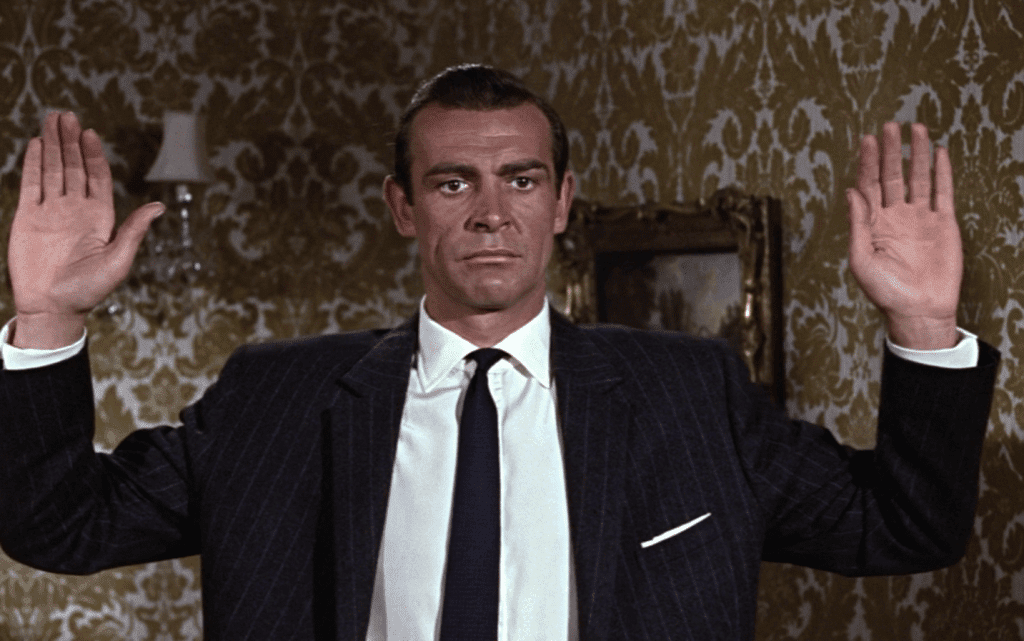 Goldfinger (1964)
Goldfinger (1964)
Hamilton directed his second Bond film, beginning with a scene where Bond finds himself disgusted by a femme fatale who betrays him. Unfortunately for Jill Masterson (Shirley Eaton), the next Bond girl, she betrays Bond?s target, the smuggler Auric Goldfinger (Gert Frobe,) and finds herself drowned by gold paint. Bond is complicit in her death at the hands of Oddjob (Harold Sakata), another classic henchman, and seethes at the opportunity to hunt Goldfinger down.
M tells Bond to treat his assignment coldly and efficiently, telling Bond that ??it?s only by the grace of God and the help of Felix Leiter that you?re not in the hands of the Miami police.?? As Bond has his instructions, he claims he knows gold when he sees it, echoing the Potter Stewart Supreme Court ruling. He?s outfitted by Q with an Aston Martin DB5 that?s complete with defensive and offensive weapons, and sent into a direct collision course with Goldfinger.
Challenging Goldfinger at his own country club, Bond?s refusal to acknowledge the death of Masterson further infuriates the mastermind. Bond ends up captured, Tilly murdered, and subsequently Bond learns of Goldfinger?s plans for Operation Grand Slam. In one of the classic Bond scenes in arguably the best Connery movie, Goldfinger threatens to turn his laser on Bond?s, ahem, person. Bond quips, ??Do you expect me to talk??? and Goldfinger?s epic response, repeated but never quite replicated, ??No, Mr. Bond, I expect you to die!??
The plot hinges on Galore?s ?conversion.? Certainly, there?s a sexual aspect to what becomes of their relationship, but Bond?s argument against Goldfinger?s evil and madness has an impact on Galore?s decision-making. While Bond is intent on stopping Goldfinger, his actions alone aren?t enough to stop Operation Grand Slam; he needs to gain an ally in Galore and Leiter himself proves to be vital in stopping the explosion.
Thunderball (1965)
Terrence Young returned to direct a controversial Bond. [Never Say Never Again (1983) is the ?other? movie to share the similar storyline, and in many ways, the second Connery go round with similar trends is more powerful, even in Connery?s advanced age. Directed by Irvin Kershner (The Empire Strikes Back), this version starred Kim Basinger as the pilot?s sister Domino Petachi, Klaus Maria Brandauer as Maximillian Largo, Max von Syndow as Blofeld, and included Barbara Carrerra as femme fatale Fatima Bush, and Rowan Atkinson as clutsy agent Nigel Small-Fawcett.] The first Bond movie to open with a funeral, Thunderball shows the viciousness of Blofeld, who electrocutes an operative who has stolen from him, before Bond is sent to recuperate at a resort where he uncovers another SPECTRE plot.
SPECTRE agent Largo engineers the theft of NATO atomic bombs and demands millions in ransom, threatening to detonate them in a major American or British city. Tracking Largo to the Bahamas, Bond seduces Largo?s captive/mistress Domino, allies with another British agent (Martina Beswick), and mixes it up with a variety of Largo?s henchmen. Bond finds himself evaluated by Fiona Volpe (Luciana Paluzzi) in a way that highlights his character: ??James Bond, who only has to make love to a woman, before she hears heavenly choirs singing, repents, and returns to the side of virtue. What a blow it must?ve been, a failure.??
After Bond reveals the truth about Largo?s murder of her brother, Domino seeks revenge and Largo threatens her with torture: ??Do not live in hope, my dear. There is no one to rescue you.?? What follows is a flurry of activity underwater, as Bond and Felix Leiter (Rik Van Nutter) wrestle the bombs away from Largo?s men, that plays over a musak backdrop, with campy fight scenes, but ultimately ends with Largo?s death.
You Only Live Twice (1967)
This sprawling, globe-spanning story under the direction under Lewis Gilbert (who would return to direct The Spy Who Loved Me and Moonraker) took a script by acclaimed children?s author Roald Dahl and set James Bond into battle against Ernst von Blofeld (Donald Pleasance, this time). First, there was a virtually ridiculous ?eating? of an American spacecraft by another larger spacecraft that is naturally blamed on the Russians, setting up the threat of World War III. As the English government comes to the conclusion that another enemy is at the root of this attack, Bond fakes his own death with the help of an all-too-willing Delilah, and he is buried at sea.
It?s obvious that Blofeld is being set up as a repeat villain, a Dr. Moriarty to Bond?s Sherlock Holmes, but with the stilted, campy fighting, the poor special effects, and the diminishing script, it?s obvious that Connery would long for something different. Which brings us to the meaningful, but brief, George Lazenby era in the James Bond canon.
 A BRIEF INTERLUDE: On Her Majesty?s Secret Service (1969)
A BRIEF INTERLUDE: On Her Majesty?s Secret Service (1969)
Director Peter Hunt, who had been involved in the previous five Bond movies, took George Lazenby in a different direction than what we?d seen from Connery or the previous interpretations of Ian Fleming?s spy. James Bond pulls Contessa Teresa ?Tracy? di Vincenzo (Dianna Rigg, The Avengers) out of the water where she?s trying to commit suicide, and then plays to the camera in a way that we hadn?t seen before (or since). Fortunately, it?s the last really ?campy? element of Hunt?s movie, as if to say, ?we?ll be okay without that Connery fellow.?
Bond encounters Tracy again in the hotel, dressed in an absolutely ridiculous, frilly shirt, and she throws herself at him ?in payment.? Tracy throws sex at Bond, but Bond is only pursuing Blofeld, though Teresa?s father, Marc-Ange Draco (Gabrielle Teretti) of the Union Corse criminal organization, pursues Bond as a likely husband for his daughter. Draco tells Bond that some women need to be dominated but, in an unexpected move, Bond turns down the one million dollar bribe. Draco is a villain, but not villainous, merely a concerned businessman and father who is rebuffed; Bond is the gentleman, defending the honor of his one true love.
Along the way, Bond finds himself torn between his desire to capture Blofeld, who escaped the island volcano explosion, and his orders from M. In the midst of his pursuit of Tracy, he threatens to resign to fulfill his need for revenge, but M tells him that the ?license to kill is useless unless you can set up the target.? Bond ends up falling for Tracy as he continues to court her, and Lazenby portrays him as genuinely caring about her feelings. But the mission comes first, and Bond impersonates a genealogist to get closer to Blofeld (this time Telly Savalas), after first finding out that his family crest is ?The World Is Not Enough.?
As Sir Hilary Bray, Bond infiltrates Blofeld?s ?research institute? on top of Piz Gloria in the Swiss Alps. Lazenby looks like Christopher Reeves, hiding behind glasses to mask who he really is, as he meets and romances the ?Angels of Death,? ten women who have been secretly programmed, in Blofeld?s plan to make plants and animals in all of the leading countries infertile. The motivation is absolutely financial: Blofeld wants to be able to control supply and demand! Bond?s knowledge of genealogy betrays him, and Blofeld sends Bond fleeing from the mountain. There is real fear on Lazenby?s face as he avoids Blofeld?s henchmen at a skating rink, before Tracy comes to his rescue as an ?alternate angel.?
By the end of the film, Bond has foiled Blofeld?s plot, but the cause of Bond?s great hurt is evident when the SPECTRE agent murders Tracy on their honeymoon. Blofeld?s mission has been thwarted, but Bond?s Pyrrhic victory proves to be more monstrous to him personally. Bond, who had previously stated that he?d never find another woman like her, tells her that they have all the time in the world moments before her death. Bond?s tears of sadness reflect a side of the man we haven?t seen in Connery and won?t see again until Daniel Craig nearly forty years later.
While Lazenby (foolishly) refused to do any more Bond films, his entry into the canon showed that Bond did have feelings, and in many ways, for real fans of the series, set up his unwillingness to get involved emotionally with members of the opposite sex, regardless of what he was missing. In On Her Majesty?s Secret Service, the mission became personal, and Bond paid the ultimate price, unwilling to save the woman whom he loved.
Diamonds Are Forever (1971)
Guy Hamilton returned after a seven-year-hiatus to direct three more Bonds, starting in 1971. The action resumes with James Bond breaking into a resort where Blofeld (Charles Gray, who briefly played a British agent in For Your Eyes Only) is being cloned. After exacting his revenge, M grumbles, ??Now that Blofeld is dead, the least we can expect is some plain, solid work.?? It?s clear that Bond has obsessed on avenging Tracy, and his distraction from all other missions has annoyed his boss at MI6.
From here on out, the movie plays out like a bad version of a Coen Brothers? adaptation of Bond. There?s a loosely-sewn plot about conflict diamonds from South Africa, and Bond?s assignment to investigate who has the diamonds and who is killing off various smugglers. The audience knows it is Mr. Wint (Bruce Glover) and Mr. Kidd (Punter Smith) who dispose of their smuggling competition with such witticisms as ??If God had wanted man to fly, he would?ve given him wings.??
The ridiculous fight scene between Bond and Blofeld?s Bambi (Lola Larson) and Thumper (Trina Parks) and the moon buggy chase are only topped by Jimmy Dean?s portrayal of Willard Wyte, who reveals that SPECTRE is trying to build a satellite made out of diamonds. In the end, Bond stops the plot, goes with Case on a cruise, and thwarts a revenge murder plot, dispatching of Wint and Kidd in comic fashion.
In Conclusion
Obviously a low point for Bond movies, and especially for Connery, Diamonds Are Forever was his last until he reappeared in the ?unofficial? Never Say Never Again in 1983. It combined elements of Thunderball with the aging superstar?s charm and sarcasm. But Connery?s delivery of Bond to the public in 1962 set the stage that all of the other Bonds have built on to make the character what he is today.
In Connery?s version, Bond is rough and brusque in his conversations with everyone (short of Moneypenny, M?s secretary, who we assume he loves secretly), hard on the women who serve as pawns to the villains he battles, and fearless when it comes to battling the forces of evil. Lazenby?s brief interlude gave us hope that there?s a possibility for something more than a ?blunt instrument? in Bond, but short of the quips, he hasn?t shown an overabundance of intelligence or feeling. To this point, people and relationships are serviceable means to accomplishing whatever mission the British government assigns to him.

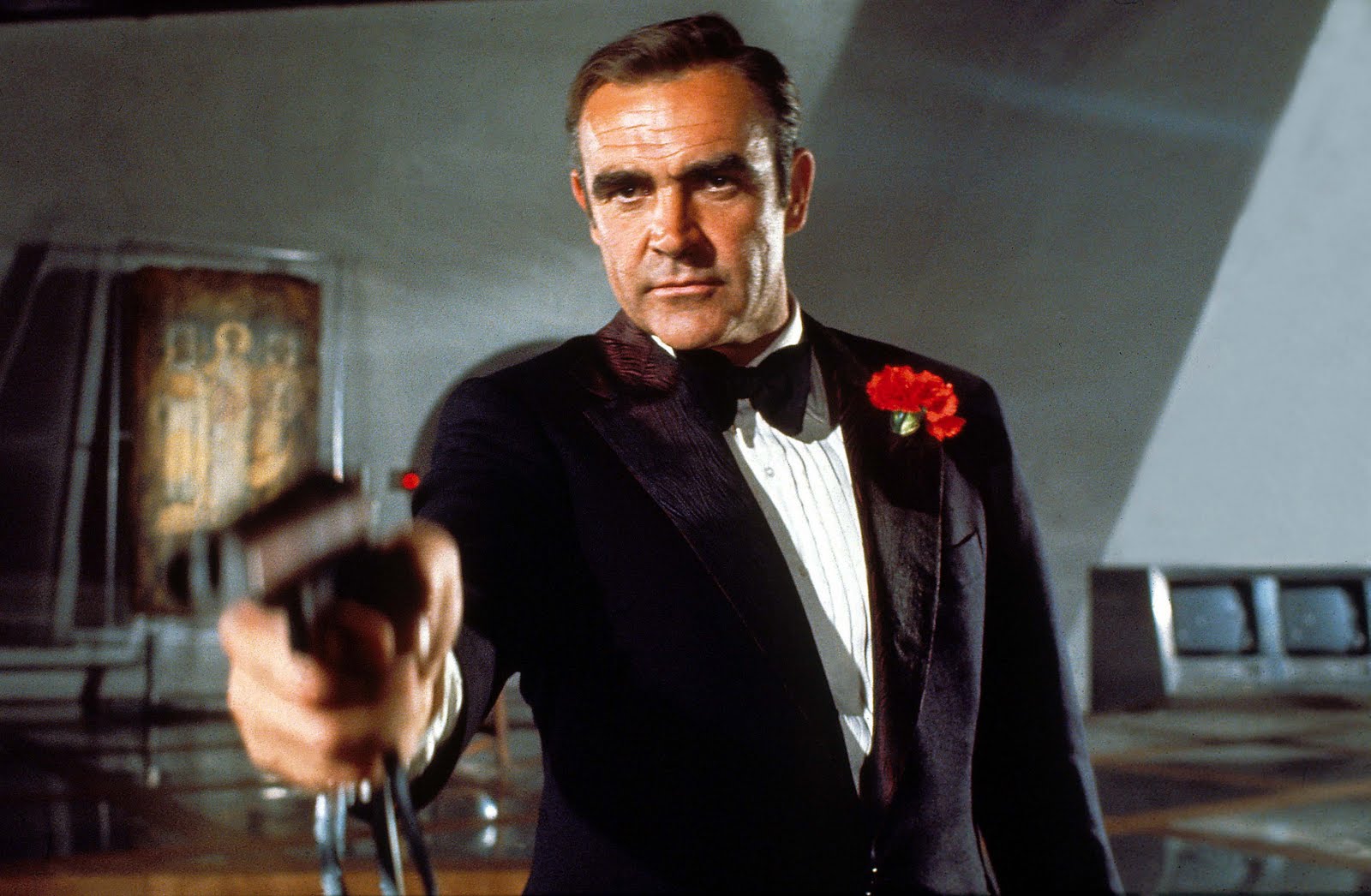
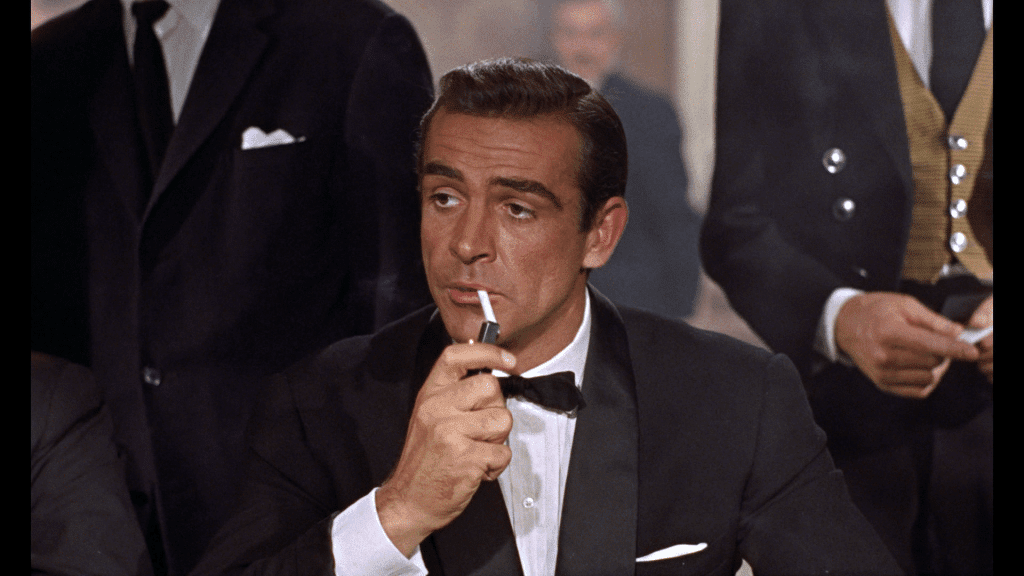



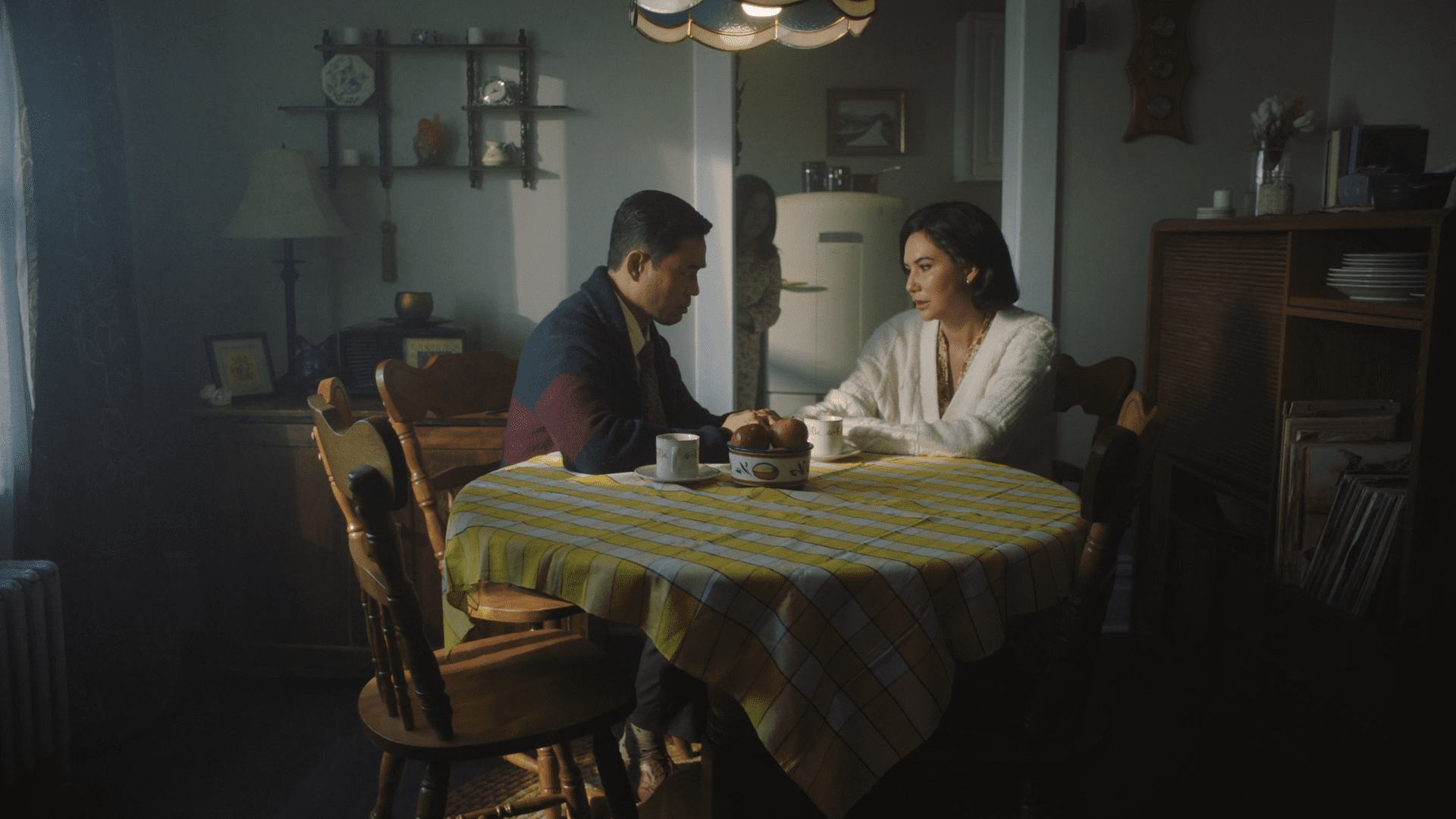
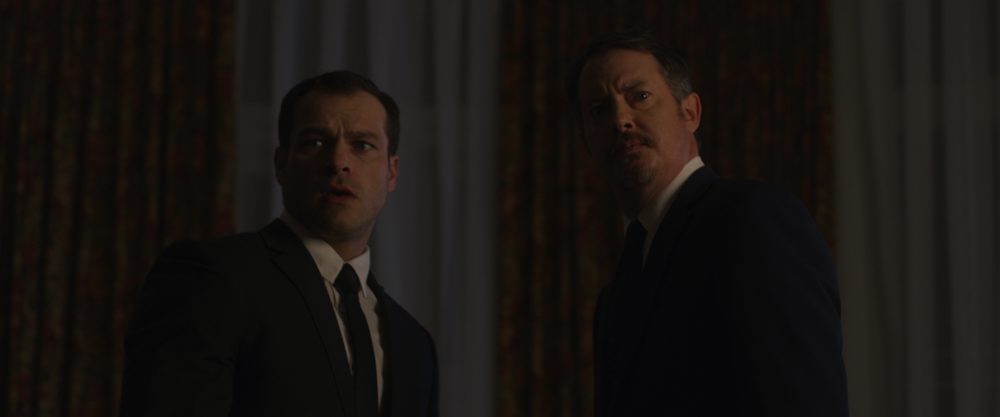
one of the best”